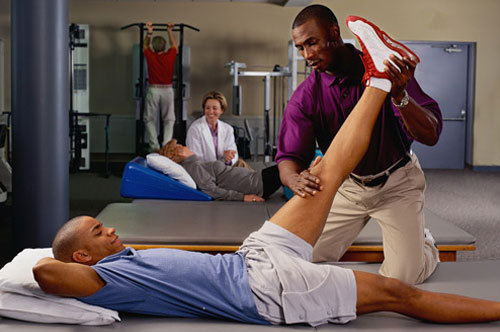
Choosing Physical Therapy
Most people don’t think about getting physical therapy until their doctor refers them. If you receive a referral from a health care professional, it’s time to jump in. Physical therapy has many advantages:
- Improves range and ease of motion.
- Speeds recovery from accident, injury, or illness.
- Helps reduce or avoid use of painkillers through pain management.
- Reduces need for surgery.
Preserving mobility and function allows you to continue earning a living with less pain. But physical therapy can also help get you “back on your feet” in the real world. Having to take pain killers can help, but they can also add problems. Painkillers mask the pain rather than removing it. Physical therapy can help ease the pain by treating the condition and addressing the cause of pain rather than its symptoms. Negative side-effects from painkillers can include:
- Depression.
- Addiction.
- Painful bowel movements.
- Withdrawal at the end of use.
Home Care
Many physical therapists come to your home to help achieve your goals. You might request help because you have back problems and want to put surgery off. You might also want help so you don’t develop problems common in your family history. Even starting in your 30s to make sure you keep proper posture as you age is advisable.
A physical therapist in your home often teaches exercises that you can do on your own. But your professional may also work as part of a healthcare team with your doctor, nutritionist, surgeon, and physician’s assistant. Sometimes the work may help keep you from surgery. Other times it may strengthen you in preparation for surgery.
Physical Fitness and Prevention
Preventative care through physical therapy works well for those who are strongly focused on physical fitness. Gym rats, runners, bikers, surfers, ballplayers all benefit. A physical therapist determines possible problems from decreased range of motion, imbalance between muscle groups, or just tightness. An evaluation can help those who work out often or have strenuous careers. They can also help make sure your equipment works with you and doesn’t cause problems. Equipment could include shoes, mats, weights, and exercise machinery.
Knowing your needs is important when it comes to physical therapy. Ongoing care can be expensive, so you want to make sure there is a good reason for it. However, you should continue work with your PT until you can do your program on your own to maintain your positive results.